
Healthy swaps to traditional foods
As a registered dietitian, I’m asked about the many healthier alternatives to not-so-healthy foods on a daily basis. What do I think of cauliflower “rice” in place of white rice? Jicama wraps instead of flour tortillas? And lentil pasta rather than wheat pasta? All three of these get my thumbs up.
But some swaps are either unnecessary, not worth the extra cost, or not actually a nutrition upgrade (I’m looking at you, protein ice cream).
A smart substitution should improve the overall quality of your meal. This may involve replacing a highly processed food with a nutrient-rich whole food or a food tied to better health outcomes. A savvy swap may also help fill a nutrient gap—such as increasing fibre, vitamins, or minerals—create a better overall macronutrient balance, or fill missing servings from important food groups, like produce or whole grains. In other words: Simply adding an isolated nutrient to a highly processed or sugary treat isn’t a trade up.
Fortunately, there are lots of trendy exchanges that score actual nutrition points. I have my own favourites, but I also reached out to a few colleagues who are dietitians, as well.
Here’s a round-up of healthy food swaps to traditional foods that nutritionists trust, plus tips on how to incorporate them to best optimize your health.
(Related: 10 Things That Happen When You Stop Eating Processed Foods)
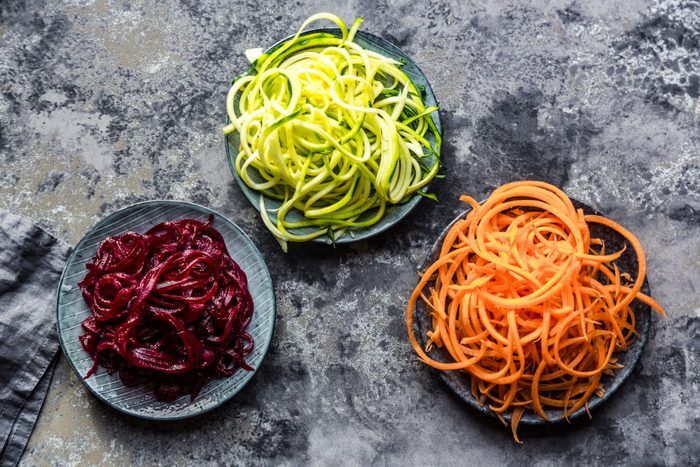
Veggie noodles in place of wheat noodles
From a dietitian’s perspective, the goal of this trend isn’t to eliminate carbs, it’s to eat more veggies. “Ninety percent of Americans aren’t meeting the minimum daily veggie targets, so swapping some or all of your noodles with a veggie, like zucchini is a smart strategy that boosts your veggie intake, balances out your meal, and makes veggies fun,” says Samantha Cassetty, MS, RD, nutrition and wellness expert and co-author of Sugar Shock.
For a fresh version, Cassetty recommends slicing a zucchini lengthwise to make lasagna-style noodles or using a spiralizer to create strands. “If you’re not ready to go all in, you can replace half your noodles with veggie noodles,” she says.
Also try: Zucchini Noodle Carbonara
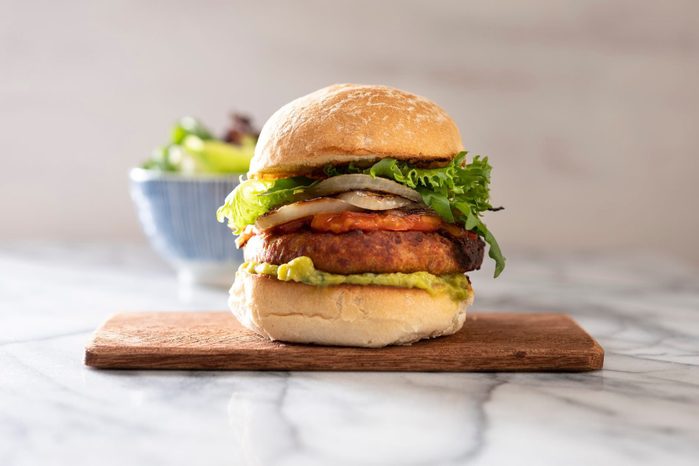
Plant-based burgers instead of beef
This swap now has research-backed support. In a study, published in 2020 in The American Journal of Clinical Nutrition, researchers asked participants to consume two or more servings per day of either animal protein (mainly red meat) or Beyond Burger, a plant-based meat alternative, for eight weeks.
This is all while keeping other foods and drinks as similar as possible. Then they consumed the reverse pattern for another eight weeks. Researchers found that the plant-based product improved several risk factors for heart disease, including a reduction in “bad” LDL cholesterol, modest weight loss, and lower blood levels of trimethylamine-N-oxide (TMAO), a compound linked to blood vessel inflammation. (This Stanford University study was funded by Beyond Meat, which makes the burger, but researchers say the company was not involved in the design or execution of the study, and didn’t participate in the data analysis.)
I enjoy Beyond Burger wrapped in lettuce leaves, piled with tomato, onion, and avocado, and paired with baked sweet potato “fries.” Many of my meat-loving clients even prefer these faux burgers to their animal-based counterparts. Plus, they’re better for the planet, suggests a study published in 2019 in the journal Sustainability. Researchers found that meatless meals have more than a 40 percent reduction in environmental impacts, including carbon footprint, water use, and health impacts of pollution.
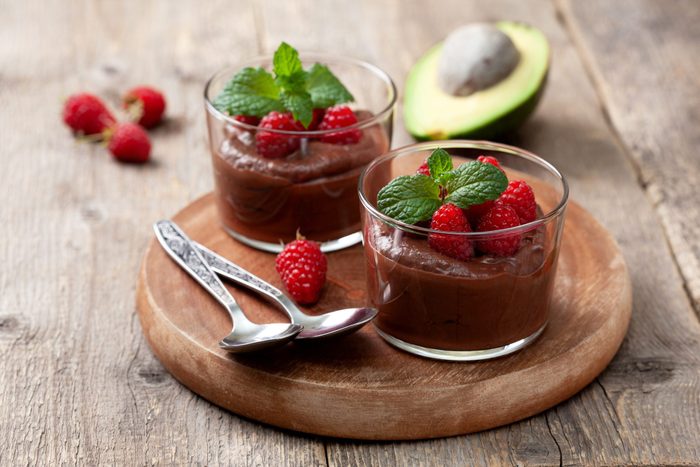
Avocado chocolate mousse in place of ice cream
If you’re hesitant about this one, I think you’ll be more than pleasantly surprised. Due to their rich texture and mild flavour, avocados work well in desserts, and pair perfectly with chocolate. Enjoying them as part of a sweet treat also offers important health benefits. A study, published in 2019 in the Journal of Nutrition, found that one avocado per day as part of a heart-healthy diet reduced blood levels of oxidized “bad” LDL cholesterol and markers of oxidative stress, which are risk factors for heart disease.
(Related: What Happens When You Eat Avocado Every Day)
For a quick option try this simple recipe from Denver-based dietitian Malena Perdomo. She recommends combining avocado, almond milk, cocoa powder, melted chocolate chips, maple syrup, and a sprinkle of sea salt to mix and freeze. “Avocados are low in carbs, heart healthy, and provide a good source of fibre,” says Perdomo. They’re also rich in potassium, a mineral required for heart rhythm, nerve, and muscle function, which also helps regulate blood pressure.
Also try: Chocolate Avocado Brownies
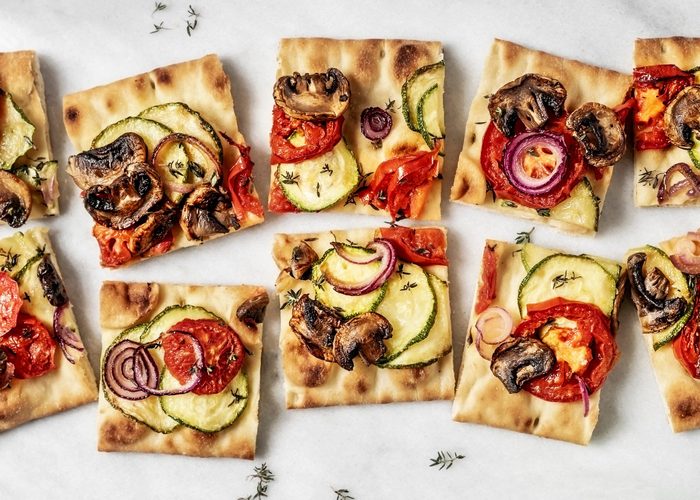
Chickpea flatbread instead of pizza crust
Chickpea products have exploded in popularity, and for good reason. This superfood is rich in vitamins, minerals, plant protein, fibre, and antioxidants. Chickpeas (garbanzo beans) also support healthy weight management. According to a study, published in 2016 in the journal Nutrients, regular chickpea eaters are 53 percent less likely to be obese, and have a lower BMI (body mass index) and waist measurement compared to non-chickpea eaters.
“I make my own flatbread crust using chickpea flour,” says Cassetty. She recommends mixing one cup of flour with a half cup of water, along with seasonings, such as garlic powder or Italian herbs. Spread the mixture on a parchment paper-lined baking sheet and bake at 375 degrees F for 15 to 20 minutes.
“Add whatever toppings you’d like and pop it back in the oven to heat,” says Cassetty, who notes that this two-serving recipe provides 10 grams of plant protein and five grams of fibre, plus nutrients, including magnesium and iron. “Nutrition-wise, it’s less processed and much healthier than ordinary pizza crust, and the protein and fibre combo will leave you feeling content for a longer stretch of time.”
Samantha and I both love Bob’s Red Mill chickpea flour, which can be used in a variety of other recipes, such as pancakes, muffins, and brownies.
Also try: Vibrant Chickpea Salad and Chickpea & Fennel Meat(less) Balls
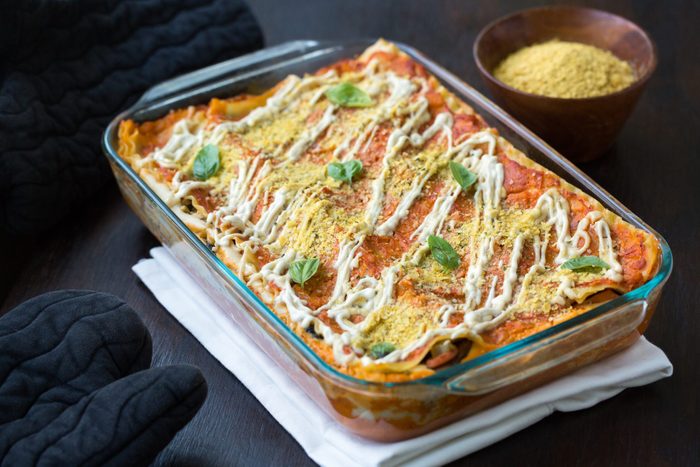
“Nooch” (nutritional yeast) in place of Parmesan
This swap, which is all over Instagram and foodie blogs, is a favourite among plant-forward dietitians. “I love nooch to kick up flavours a notch for vegetarian dishes,” says Jackie Newgent, RDN, a registered dietitian nutritionist, chef, and author of The Clean & Simple Diabetes Cookbook.
Newgent notes that nutritional yeast is ideal as a swap for Parmesan due to its appearance and salty taste. “Plus, I’m a big fan of its vitamin B12 content, since it’s more challenging to get this vitamin when eating plant-based,” she adds.
A specific type of fibre in nutritional yeast called beta-glucan, has also been shown to support immunity and bone density, reduce cholesterol and blood pressure, and potentially lower cancer risk, according to a study published in a 2017 issue of International Journal of Molecular Sciences.
For a wow-worthy popcorn flavouring, Newgent recommends combining nooch with fresh lemon zest. In addition to being used as a seasoning, nooch is a key ingredient in homemade cashew “cheese,” another swap Newgent and I favour over dairy-based cheese.
Also try: Other foods that are high in vitamin B12
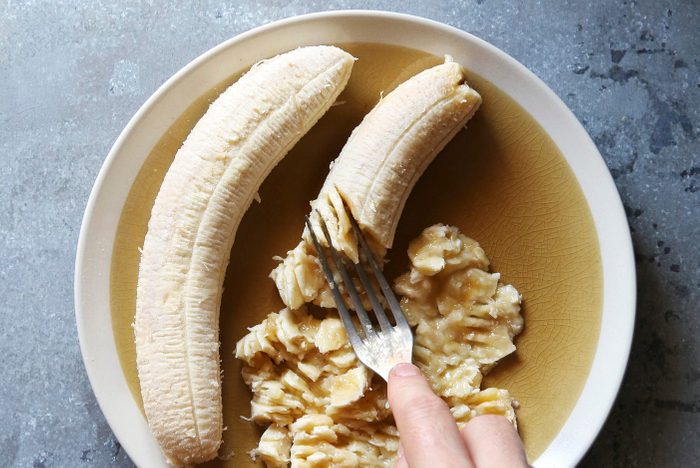
Banana pancake batter instead of traditional batter
Grains should not be shunned as a category, especially fibre and nutrient-rich whole grains. But as Cassetty points out, “Typical pancakes are made with processed refined flour, and even if you add a healthy topping, like fruit, it’s still a carb-rich, protein-poor meal that lacks balance.”
To make a well-rounded stack, Cassetty makes pancakes using mashed bananas mixed with two whisked eggs. “The bananas make them sweet enough that I don’t need syrup and they check off the carbohydrate portion of the meal,” she says. “The eggs bring protein, which we need at each meal, and instead of syrup, I top my pancakes with nut butter, which adds healthy fats.”
(Related: 9 Banana Benefits That Go Beyond Your Daily Dose of Potassium)
For a fully plant-based option, replace each egg with one tablespoon of chia seeds and three tablespoons of water.These mighty seeds can also be used as the base for breakfast chia pudding, or to add plant protein and healthy fat to a smoothie or overnight oats.
Also try: Overnight Maple-Banana Oats
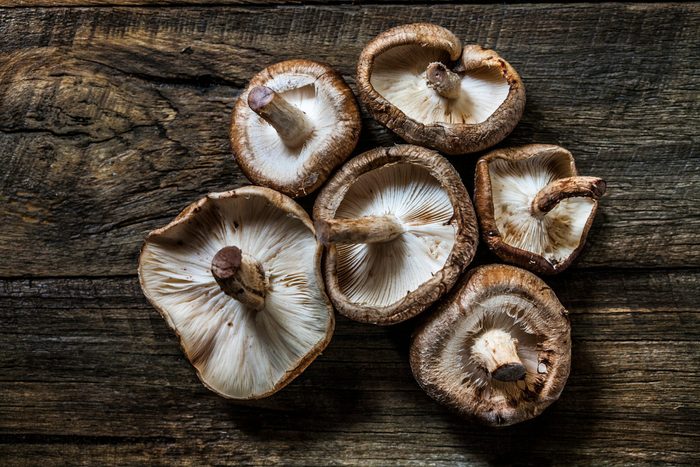
Mushroom jerky in place of beef jerky
Jerky is having a moment, but meat-based products aren’t the only option. This substitution ups your intake of veggies and key nutrients and simultaneously helps the planet.
(Related: 9 Reasons Mushrooms Are The Next Big Superfood)
“Since cattle production has a negative impact on the environment, I encourage finding swaps for all beef products,” says Newgent. She loves mushroom jerky because it’s packed with fibre and vitamin D. “It’s delicious because of the ‘meaty’ umami taste of mushrooms. And mushroom jerky comes in many flavours made without harmful additives.”
Also try: 30 Mushroom Recipes Full Of Health-Boosting Benefits
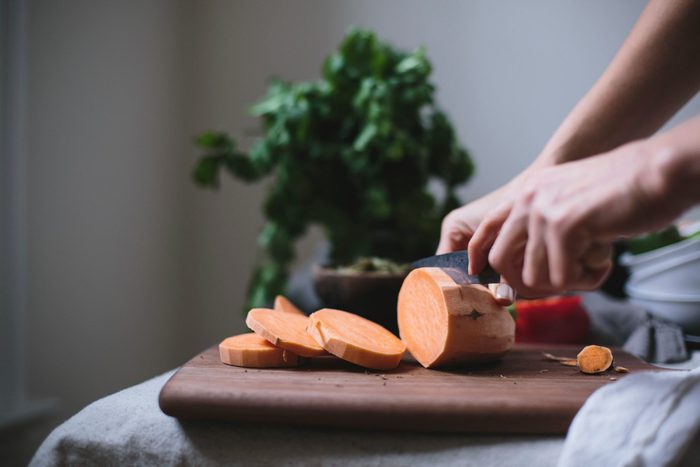
Sweet potato slices instead of sliced bread
Bread made with refined white flour is stripped of its nutrients and fibre. And even whole grain versions are often made with added sweeteners and preservatives. Sweet potato is a simple one-ingredient alternative that offers whole food carbohydrates that are nutrient-, fibre-, and antioxidant-rich. Plus, it’s easy.
For a homemade version, peel and slice a medium to large sweet potato lengthwise to create quarter inch pieces that resemble bread slices. Toast the slices in your toaster until each is tender all the way through and golden on the outside (this may take three to four cycles). Spread with almond butter and ground cinnamon, mashed avocado and pumpkin seeds, or hummus and veggies.
Also try: 20 Easy and Healthy Sweet Potato Recipes to Make Now
Next: 9 Superfoods You Can Turn Into Scrumptious Comfort Food
